Diamond-Coated Plasma Probes for Hot and Hazardous Plasmas
Abstract
:1. Introduction
- In the Axial Symmetric Divertor Experiment (ASDEX) Upgrade (one of the European MSTs) at the Max-Planck Institute for Plasma Physics in Garching near Munich [13], a graphite probe head (the so-called Innsbruck-Padua Probe (InnPadP)) with six cylindrical graphite pins [8,9,12] was inserted frequently up to about 4 mm inside the LCFS [14] (see Figure 1a). One of the probe pins (visible in the upper left corner) is protruding by 3 mm from the other five pins to also enable the measurement of radial profiles of the floating probe potential to obtain information on the radial electric field [11,14]. After numerous shots, the probe pins were visibly sputtered in such a way that the tips were “sharpened”, while their length was not altered (see Figure 1b).
- In a high-power impulse magnetron sputtering discharge (HiPIMS) [15] in copper, a combination of two CLPs and one EEP was used [16,17,18] (see Figure 2). The wires consisted of tungsten enclosed in alumina tubes. Within less than an hour, the Al2O3 tubes were covered by the sputtered material (Cu) and made electrically conductive. Only the EEP heating wire of tungsten remained clean due to the heating up to sufficient temperatures for electron emission, i.e., about 2000 K. Furthermore, the upper part of the double-bore Al2O3 tube carrying the tungsten loop of the EEP remained more or less uncoated.
- In the chemically very reactive magnetized potassium plasma of a Q-machine [19,20], W-wire probes and circular plane W-probes were also used, and the changes of their surfaces and of their IV- characteristics due to chemical reaction between potassium and Al2O3 and carbon hydrates were investigated [21,22]. These probes were special constructions with a heating wire around the Al2O3 tube which carried the probe wire. An additional BN tube was pushed over the heating wire for protection (see Figure 3). The heating was not as fully effective as intended, and it took several minutes until the W-probe could be considered sufficiently clean.
- ASDEX Upgrade (Axial Symmetric Divertor Experiment—further abbreviated as AUG) at the IPP (Max-Planck Institute for Plasma Physics) in Garching near Munich, Germany [13].
- TCV (Tokamak à Configuration Variable) at the Swiss Plasma Center (SPC) of the EPFL (École Polytechnique Fédérale de Lausanne) in Lausanne, Switzerland [26].
- MAST-U (Mega-Ampere Spherical Tokamak) at the CCFE (Culham Centre for Fusion Energy) in Culham, UK [27].
2. Materials and Methods
3. Results
3.1. Positive Effects
3.2. Negative Effects
3.3. Exemplary Results
4. Conclusions and Outlook
Author Contributions
Funding
Acknowledgments
Conflicts of Interest
References
- Langmuir, I. The pressure effect and other phenomena in gaseous discharges. J. Frankl. Inst. 1923, 196, 751–762. [Google Scholar] [CrossRef]
- Crookes, W. Radiant Matter: A Resume of the Principal Lectures and Papers of Prof. William Crookes, on the ’Fourth State of Matter’; James W. Queen & Company: Philadelphia, PA, USA, 1881. [Google Scholar]
- Crookes, W. On Radiant Matter; Jeff Behary’s Electrotherapy Museum: West Palm Beach, FL, USA, 1881; Available online: http://www.electrotherapymuseum.com/Library/SirWilliamCrookes/index.htm (accessed on 28 August 2004).
- Ionita, C.; Schneider, B.S.; Costea, S.; Vasilovici, O.; Kovačič, J.; Gyergyek, T.; Naulin, V.; Rasmussen, J.J.; Vianello, N.; Spolaore, M.; et al. Plasma potential probes for hot plasmas. Eur. Phys. J. D 2019, 73, 73. [Google Scholar] [CrossRef] [Green Version]
- Wes, M.A. R. SYME, Emperors and Biography: Studies in the Historia Augusta; Oxford, Clarendon Press; Oxford University Press: Oxford, UK, 1971. [Google Scholar] [CrossRef]
- Wakatani, M. Stellarators and Heliotron Devices; Oxford University Press: Oxford, UK, 1998. [Google Scholar]
- Xu, G.S.; Naulin, V.; Fundamenski, W.; Hidalgo, C.; Alonso, J.A.; Silva, C.; Gonçalves, B.; Nielsen, A.H.; Rasmussen, J.J.; Krasheninnikov, S.I.; et al. JET EFDA Contributors Blob/hole formation and zonal-flow generation in the edge plasma of the JET tokamak. Nucl. Fusion 2009, 49, 092002. [Google Scholar] [CrossRef]
- Ionita, C.; Vianello, N.; Müller, H.W.; Mehlmann, F.; Zuin, M.; Naulin, V.; Rasmussen, J.J.; Rohde, V.; Cavazzana, R.; Lupu, C.; et al. ASDEX Upgrade Team Simultaneous measurements of electrostatic and magnetic fluctuations in ASDEX Upgrade edge plasma. J. Plasma Fusion Res. Ser. 2009, 8, 413–418. [Google Scholar]
- Schrittwieser, R.; Ionita, C.; Vianello, N.; Müller, H.; Mehlmann, F.; Zuin, M.; Naulin, V.; Rasmussen, J.J.; Rohde, V.; Cavazzana, R.; et al. A Probe Head for Simultaneous Measurements of Electrostatic and Magnetic Fluctuations in ASDEX Upgrade Edge Plasma. Contrib. Plasma Phys. 2010, 50, 860–865. [Google Scholar] [CrossRef]
- Nold, B.; Conway, G.D.; Happel, T.; Müller, H.W.; Ramisch, M.; Rohde, V.; Stroth, U. ASDEX Upgrade Team Generation of blobs and holes in the edge of the ASDEX Upgrade tokamak. Plasma Phys. Control. Fusion 2010, 52, 065005. [Google Scholar] [CrossRef] [Green Version]
- Ionita, C.; Naulin, V.; Mehlmann, F.; Rasmussen, J.J.; Müller, H.W.; Schrittwieser, R.; Rohde, V.; Nielsen, A.H.; Maszl, C.; Balan, P.; et al. Radial transport in the far SOL of ASDEX Upgrade during L-mode and ELMy H-mode. Nucl. Fusion 2013, 53, 043021. [Google Scholar] [CrossRef]
- Vianello, N.; Naulin, V.; Schrittwieser, R.; Müller, H.W.; Zuin, M.; Ionita, C.; Rasmussen, J.J.; Mehlmann, F.; Rhode, V.; Cavazzana, R.; et al. ASDEX Upgrade team Direct observation of current in ELM filaments on Asdex Upgrade. Phys. Rev. Lett. 2011, 106, 125002. [Google Scholar] [CrossRef] [Green Version]
- Herrmann, A.; Gruber, O. Chapter 1: ASDEX Upgrade-Introduction and overview. Fusion Sci. Technol. 2003, 44, 569–577. [Google Scholar] [CrossRef]
- Mehlmann, F.; Costea, S.; Naulin, V.; Rasmussen, J.J.; Müller, H.W.; Nielsen, A.H.; Vianello, N.; Carralero, D.; Rohde, V.; Lux, C.; et al. ASDEX Upgrade Team Radial profiles of transport parameters in ASDEX Upgrade. Proceedings of 40th European Physical Society (EPS) Conference on Plasma Physics, Espoo, Finland, 1–5 July 2013. [Google Scholar]
- Kubart, T.; Gudmundsson, J.T.; Lundin, D. Reactive High Power Impulse Magnetron Sputtering; Elsevier BV: Amsterdam, The Netherlands, 2020; pp. 223–263. [Google Scholar]
- Schrittwieser, R.; Schneider, B.S.; Costea, S.; Vasilovici, O.; Ionita, C.; Minea, T.; Lundin, D. Measurements with cold and emissive probes in a High Power Impulse Magnetron Sputtering discharge (HiPIMS). In Proceedings of the 12th Intern. Workshop Electric Probes in Magnetized Plasmas—IWEP 2017, Naklo, Slovenia, 4–7 September 2017; Gyergyek, T., Ed.; Nuclear Society of Slovenia and Jožef Stefan Institute: Ljubljana, Slovenia, 2017. ISBN 978-961-6207-41-6. [Google Scholar]
- Ionita, C.; Schneider, B.S.; Costea, S.; Kovačič, J.; Spolaore, M.; Naulin, V.; Vianello, N.; Rasmussen, J.J.; Gyergyek, T.; Stärz, R.; et al. Recent developments in probe diagnostics. In Proceedings of the XXXIIIth Int. Conf. Phenomena in Ionized Gases (ICPIG), Estoril/Lisbon, Portugal, 9–14 July 2017; Available online: http://icpig2017.tecnico.ulisboa.pt/wp-content/uploads/2017/06/ICPIG2017-Complete-scientific-program.pdf (accessed on 3 October 2020).
- Ionita, C.; Schneider, B.S.; Costea, S.; Vasilovici, O.; Kovačič, J.; Gyergyek, T.; Naulin, V.; Rasmussen, J.J.; Spolaore, M.; Vianello, N.; et al. New diagnostic tools for transport measurements in the Scrape-Off Layers (SOL) of Medium-Size Tokamaks (MST). In Proceedings of the 19th Int. Cong. Plasma Physics (ICPP), Vancouver, BC, Canada, 4–8 June 2018; Available online: https://docs.google.com/document/d/1I1VFaC357x4mt2HT_bKqd8pW7f3k0GJrwNOmzL-7Gvw/edit (accessed on 3 October 2020).
- Rynn, N.; D’Angelo, N. Device for Generating a Low Temperature, Highly Ionized Cesium Plasma. Rev. Sci. Instrum. 1960, 31, 1326–1333. [Google Scholar] [CrossRef] [Green Version]
- Motley, R. Q-Machines; Elsevier: Amsterdam, The Netherlands, 2012. [Google Scholar]
- Strele, D.; Koepke, M.; Schrittwieser, R.; Winkler, P. A simple heatable Langmuir probe for alkali plasmas. Rev. Sci. Instrum. 1997, 68, 3751–3754. [Google Scholar] [CrossRef]
- Strele, D.; Tscholl, S.; Winkler, C.; Schrittwieser, R. A Heatable Langmuir Probe for Alkali Plasmas. Contrib. Plasma Phys. 1998, 38, 110–114. [Google Scholar] [CrossRef]
- Schneider, B.S.; Ionita-Schrittwieser, C.; Costea, S.; Vasilovici, O.; Kovačič, J.; Gyergyek, T.; Koncar, B.; Draksler, M.; Nem, R.D.; Naulin, V.; et al. New diagnostic tools for transport measurements in the scrape-off layer (SOL) of medium-size tokamaks. Plasma Phys. Control. Fusion 2019, 61, 054004. [Google Scholar] [CrossRef]
- Vianello, N.; Antoni, V.; Spada, E.; Spolaore, M.; Serianni, G.; Cavazzana, R.; Bergsåker, H.; Cecconello, M.; Drake, J. Reynolds and Maxwell stress measurements in the reversed field pinch experiment Extrap-T2R. Nucl. Fusion 2005, 45, 761–766. [Google Scholar] [CrossRef]
- Spolaore, M.; Vianello, N.; Agostini, M.; Cavazzana, R.; Martines, E.; Scarin, P.; Serianni, G.; Spada, E.; Zuin, M.; Antoni, V. Direct Measurement of Current Filament Structures in a Magnetic-Confinement Fusion Device. Phys. Rev. Lett. 2009, 102, 165001. [Google Scholar] [CrossRef]
- Hofmann, F.; Lister, J.B.; Anton, W.; Barry, S.; Behn, R.; Bernel, S.; Besson, G.; Buhlmann, F.; Chavan, R.; Corboz, M.; et al. Creation and control of variably shaped plasmas in TCV. Plasma Phys. Control. Fusion 1994, 36, B277–B287. [Google Scholar] [CrossRef]
- Clery, D. The new shape of fusion. Science 2015, 348, 854–856. [Google Scholar] [CrossRef]
- Klinger, T.; Baylard, C.; Beidler, C.; Boscary, J.; Bosch, H.; Dinklage, A.; Hartmann, D.; Helander, P.; Maßberg, H.; Peacock, A.; et al. Towards assembly completion and preparation of experimental campaigns of Wendelstein 7-X in the perspective of a path to a stellarator fusion power plant. Fusion Eng. Des. 2013, 88, 461–465. [Google Scholar] [CrossRef] [Green Version]
- Li, J.; Guo, H.Y.; Wan, B.N.; Gong, X.Z.; Liang, Y.; Xu, G.S.; Gan, K.F.; Hu, J.S.; Wang, H.Q.; Wang, L.; et al. A long-pulse high-confinement plasma regime in the Experimental Advanced Superconducting Tokamak. Nat. Phys. 2013, 9, 817–821. [Google Scholar] [CrossRef]
- Xu, G.; Wang, H.; Xu, M.; Wan, B.N.; Guo, H.Y.; Diamond, P.; Tynan, G.; Chen, R.; Yan, N.; Kong, D.F.; et al. Dynamics of L–H transition and I-phase in EAST. Nucl. Fusion 2014, 54, 103002. [Google Scholar] [CrossRef]
- Schrittwieser, R.; Xu, G.S.; Yan, N.; Naulin, V.; Rasmussen, J.J.; Schrittwieser, P.; Steinmüller-Nethl, D.; Mehlmann, F.; Ionita, C. Measurements of transport parameters in the near SOL by a diamond-coated probe head. In Proceedings of the 17th Joint EU-US Transport Task Force Meeting and 4th EFDA Transport Topical Group Meeting, Padua, Italy, 3–6 September 2012. [Google Scholar]
- Schrittwieser, R.; Xu, G.S.; Yan, N.; Naulin, V.; Rasmussen, J.J.; Schrittwieser, P.; Steinmüller-Nethl, D.; Mehlmann, F.; Ionita, C. Diamond-coated probe head for measurements in the deep SOL and beyond. In Proceedings of the European Physical Society (EPS) Satellite Conference on Plasma Diagnostics 2013, Espoo, Finland, 6 July 2013. [Google Scholar]
- Carbon Competence GmbH, Weisstraße 9, Wattens, Austria. Available online: http://carboncompetence.com/?page_id=97&lang=en (accessed on 3 October 2020).
- Liu, H.; Dandy, D.S. Diamond CVD Techniques in Diamond Chemical Vapor Deposition. 1995. Available online: https://www.sciencedirect.com/science/article/pii/B9780815513803500049 (accessed on 3 October 2020).
- Volmer, M.; Weber, A.Z. Nucleus Formation in Supersaturated Systems (in German: Keimbildung in übersättigten Gebilden). Z. Phys. Chem. 1926, 119, 277–301. [Google Scholar]
- Liu, X.; Klauser, F.; Memmel, N.; Bertel, E.; Pichler, T.; Knupfer, M.; Kromka, A.; Steinmüller-Nethl, D. Spectroscopic studies of nanocrystalline diamond materials. Diam. Relat. Mater. 2007, 16, 1463–1470. [Google Scholar] [CrossRef]
- Klauser, F.; Kaindl, R.; Bertel, E.; Memmel, N.; Steinmüller-Nethl, D. Raman Studies of Nano- and Ultra-nanocrystalline Diamond Films Grown by Hot-Filament CVD. Chem. Vap. Depos. 2010, 16, 127–135. [Google Scholar] [CrossRef]
- Kloss, F.R.; Francis, L.A.; Sternschulte, H.; Klauser, F.; Gassner, R.; Rasse, M.; Bertel, E.; Lechleitner, T.; Steinmüller-Nethl, D. Commercial developments of nano crystalline diamond—two prototypes as case studies. Diamond Relat. Mater. 2008, 17, 1089–1099. [Google Scholar] [CrossRef]
- Sternschulte, H.; Rabl, H.E.; Steinmüller-Nethl, D.; Tilg, B. Modelling the Influence of the Nucleation Density on Ultra Nano Crystalline Diamond Growth Morphology: Preliminary Results. Chem. Vap. Depos. 2008, 14, 232–235. [Google Scholar] [CrossRef]
- Chung, K.S. Mach probes. Plasma Sources Sci. Technol. 2012, 21, 063001. [Google Scholar] [CrossRef]
- Adamek, J.; Horacek, J.; Seidl, J.; Müller, H.W.; Schrittwieser, R.; Mehlmann, F.; Vondracek, P.; Pták, S.; Team, C.; Team, A.U. Direct Plasma Potential Measurements by Ball-Pen Probe and Self-Emitting Langmuir Probe on COMPASS and ASDEX Upgrade. Contrib. Plasma Phys. 2014, 54, 279–284. [Google Scholar] [CrossRef]

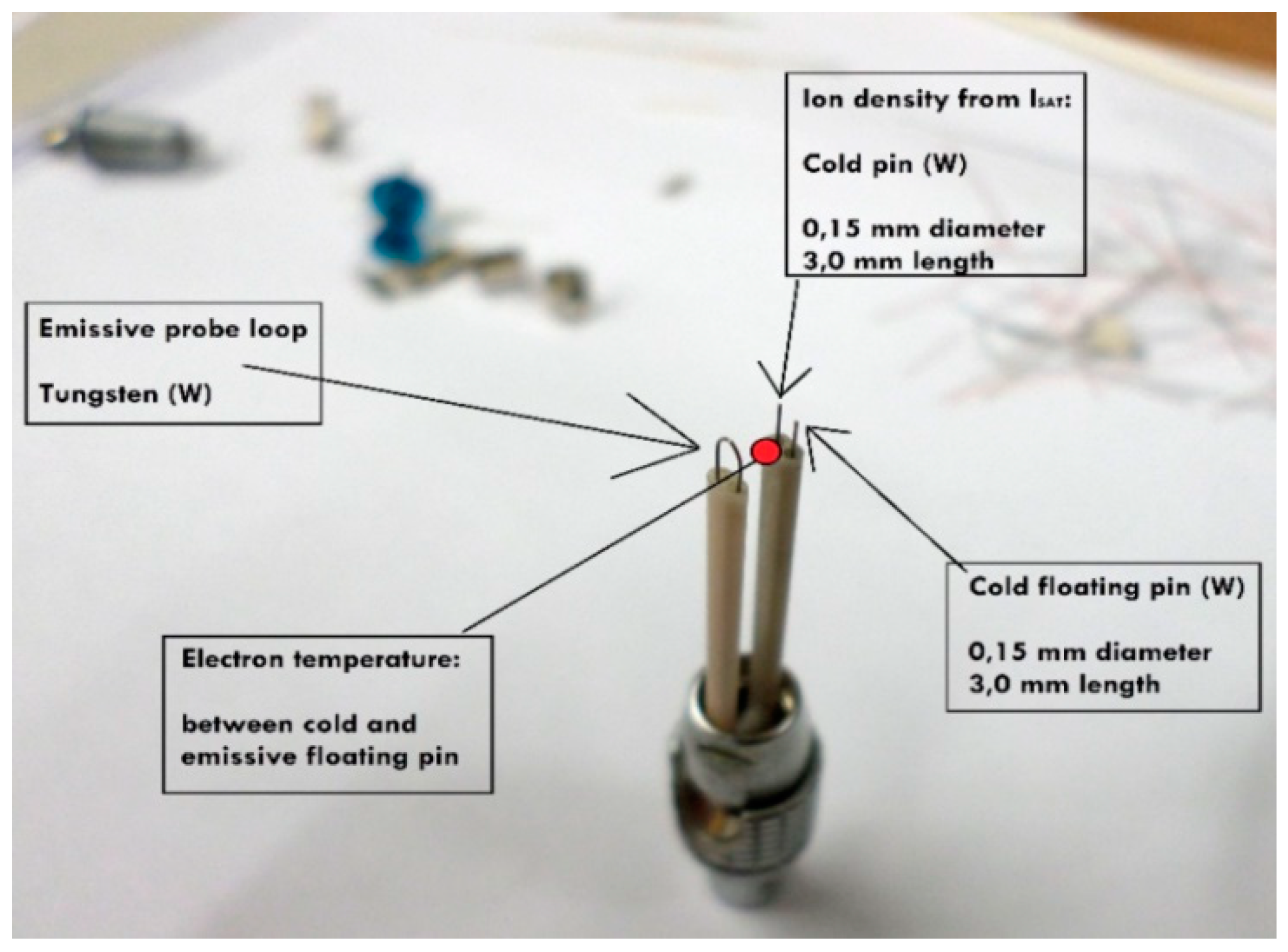
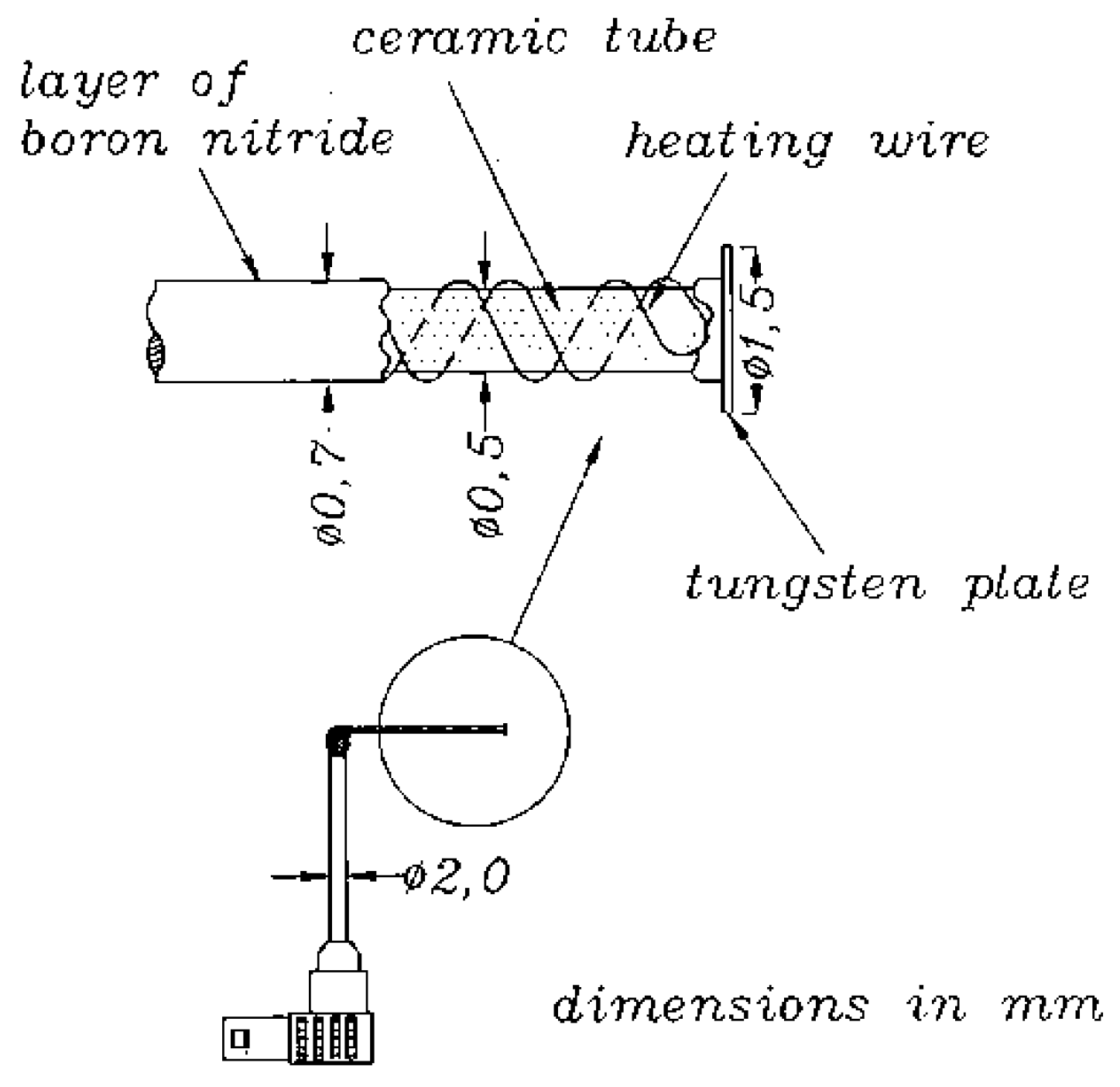
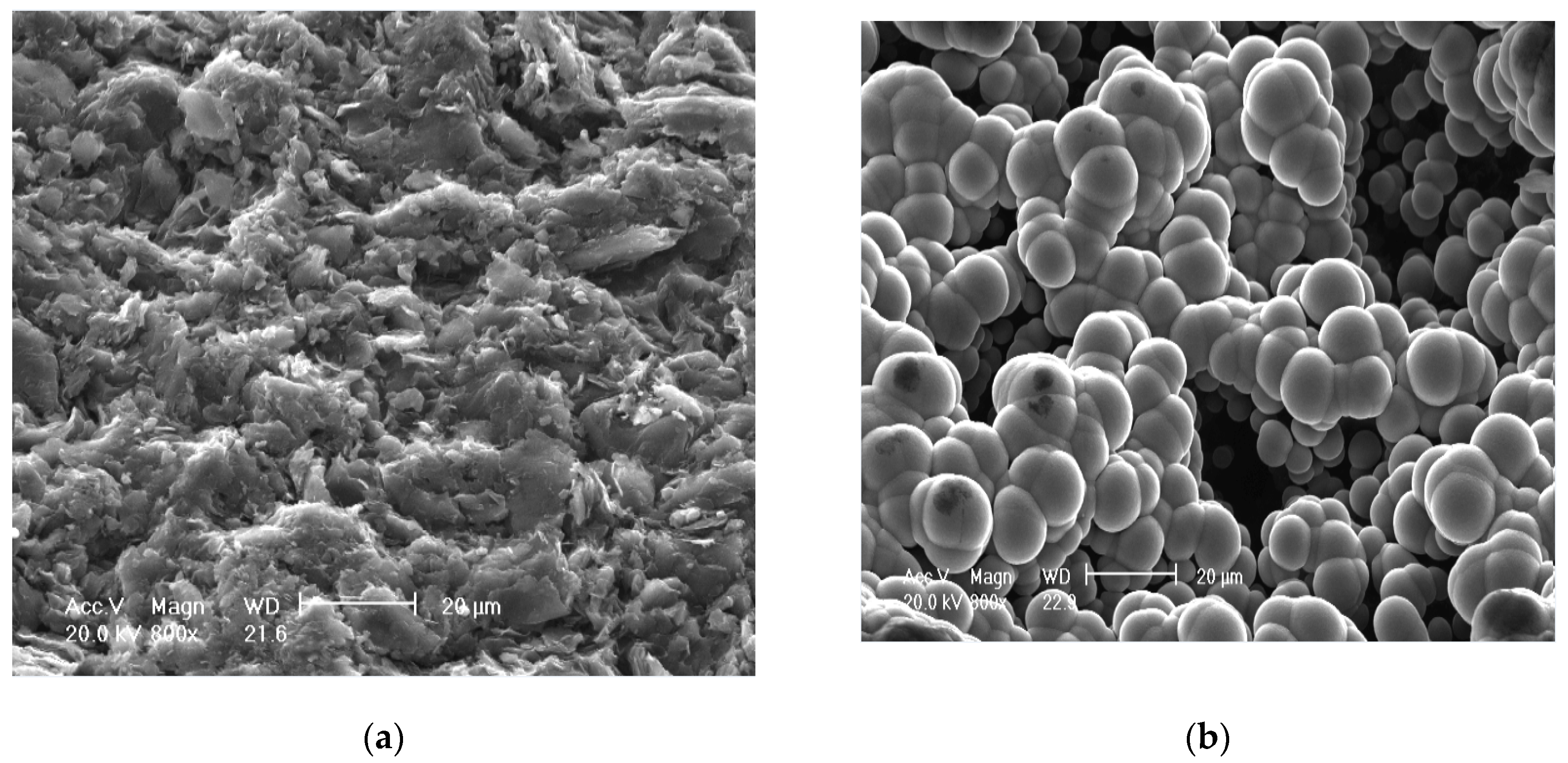
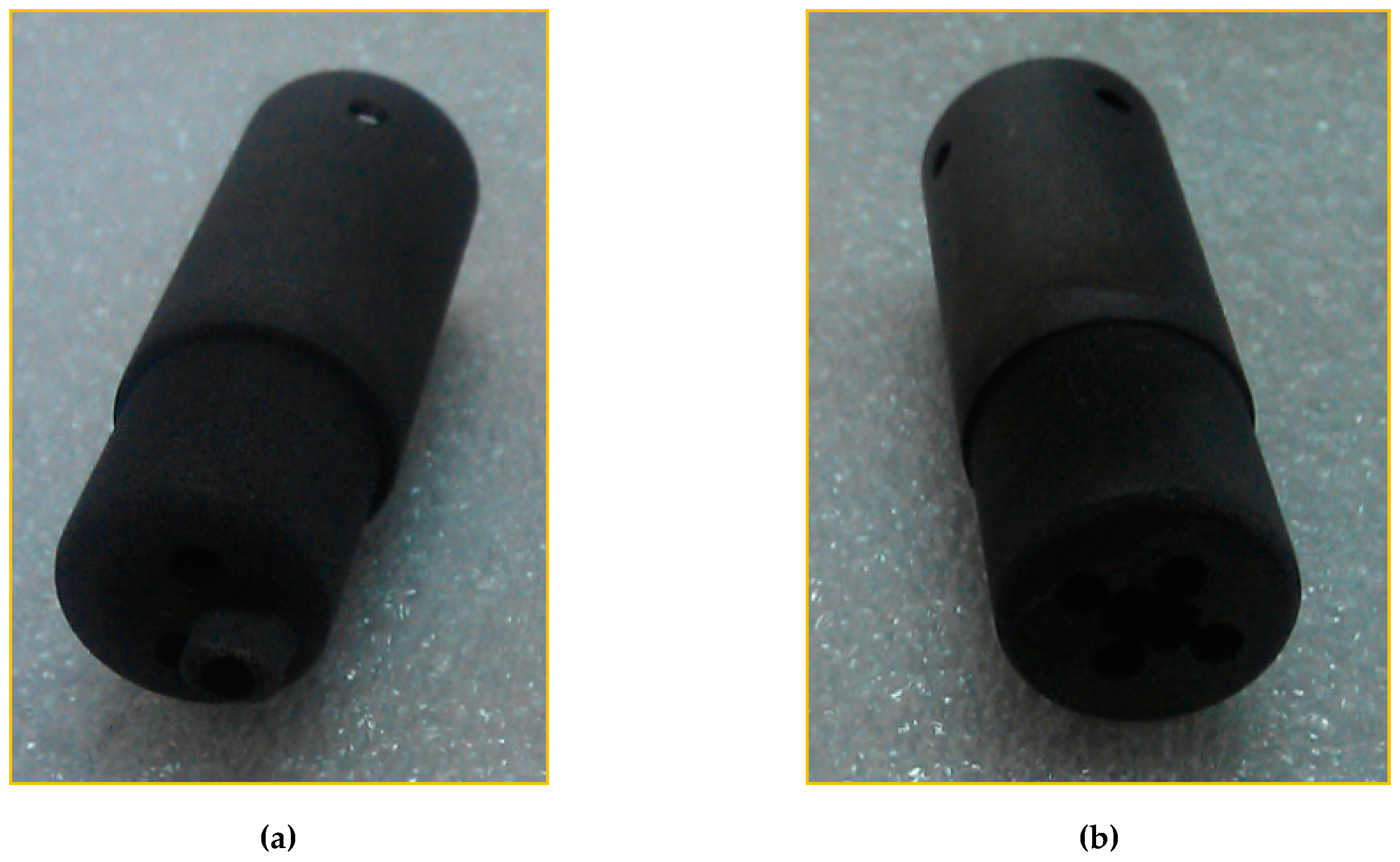
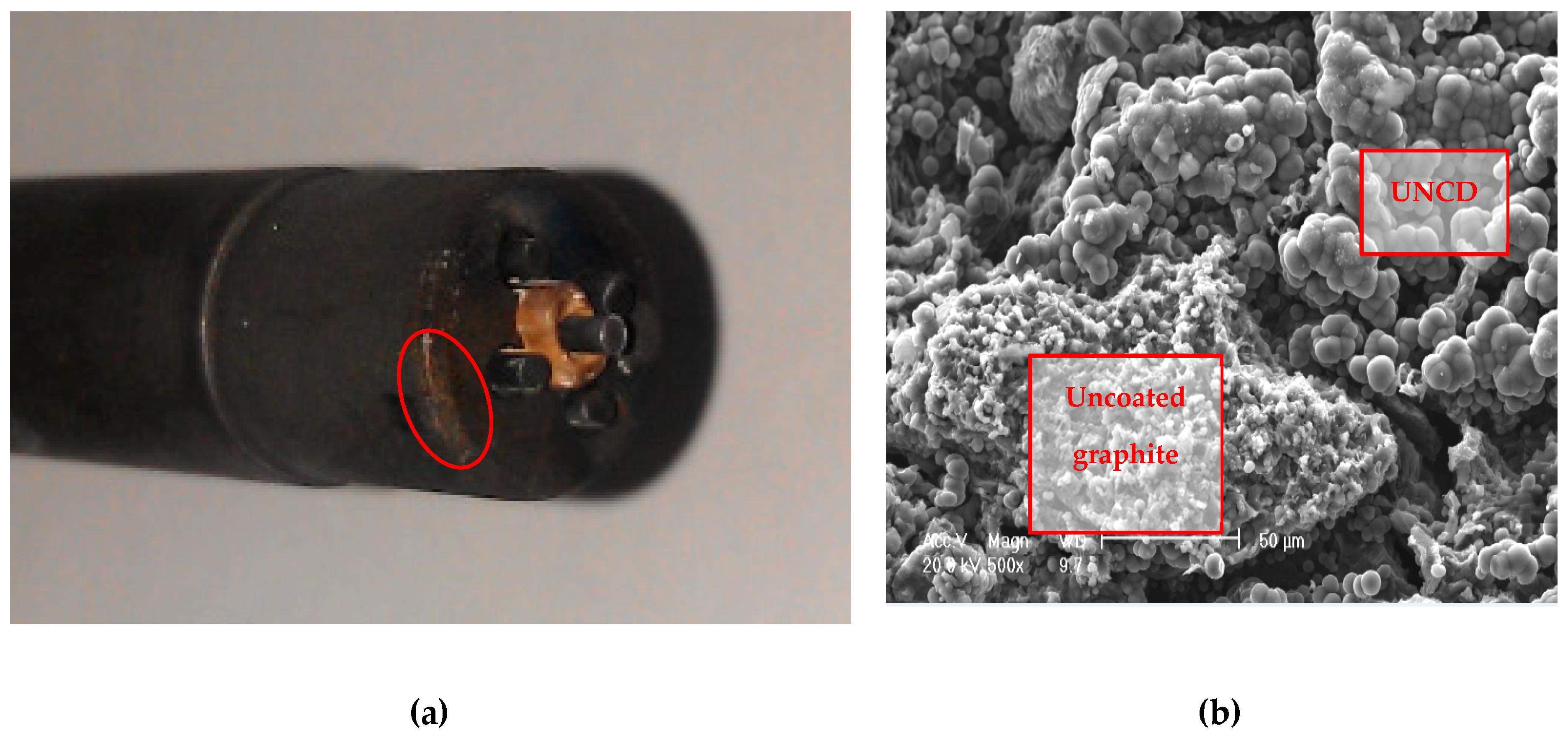

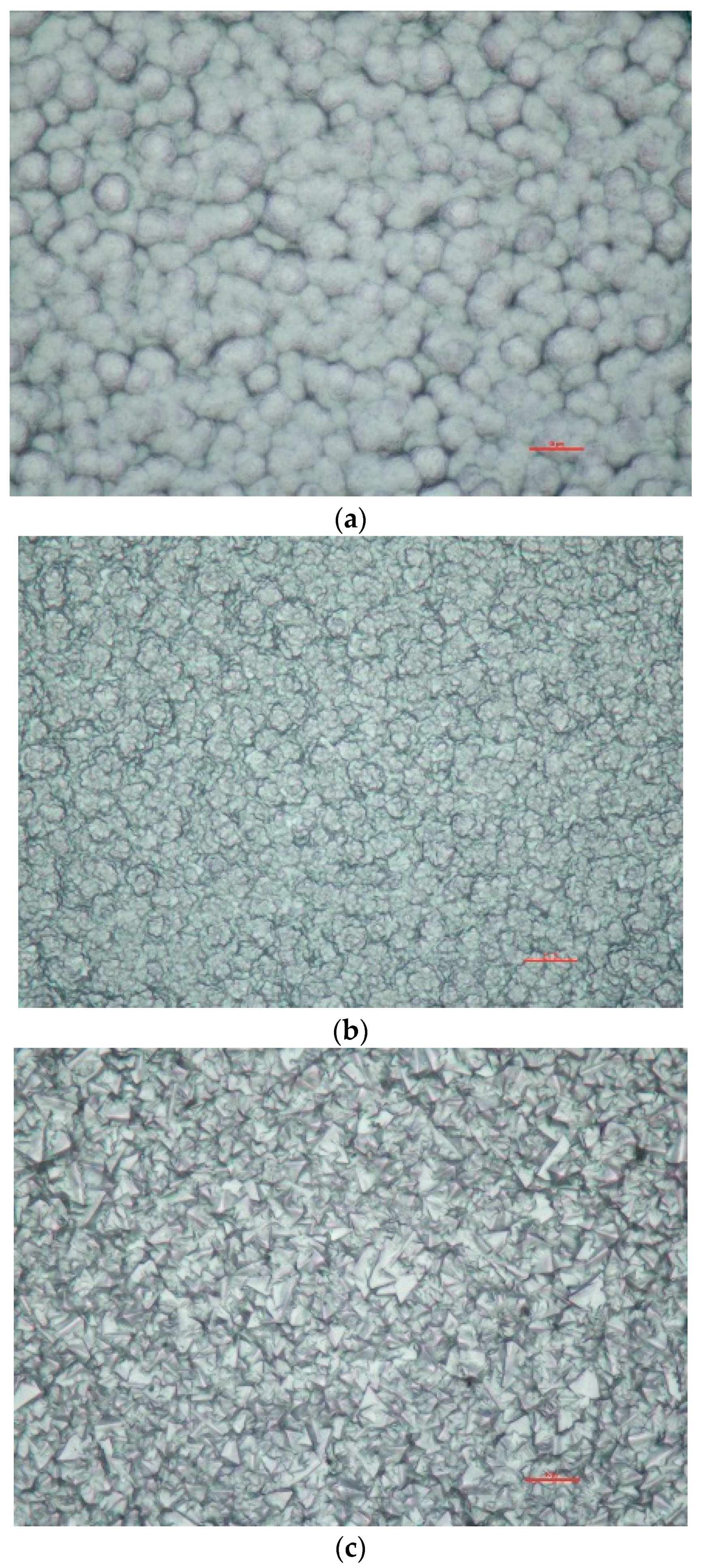
© 2020 by the authors. Licensee MDPI, Basel, Switzerland. This article is an open access article distributed under the terms and conditions of the Creative Commons Attribution (CC BY) license (http://creativecommons.org/licenses/by/4.0/).
Share and Cite
Ionita, C.; Schrittwieser, R.; Xu, G.; Yan, N.; Wang, H.; Naulin, V.; Rasmussen, J.J.; Steinmüller-Nethl, D. Diamond-Coated Plasma Probes for Hot and Hazardous Plasmas. Materials 2020, 13, 4524. https://doi.org/10.3390/ma13204524
Ionita C, Schrittwieser R, Xu G, Yan N, Wang H, Naulin V, Rasmussen JJ, Steinmüller-Nethl D. Diamond-Coated Plasma Probes for Hot and Hazardous Plasmas. Materials. 2020; 13(20):4524. https://doi.org/10.3390/ma13204524
Chicago/Turabian StyleIonita, Codrina, Roman Schrittwieser, Guosheng Xu, Ning Yan, Huiqian Wang, Volker Naulin, Jens Juul Rasmussen, and Doris Steinmüller-Nethl. 2020. "Diamond-Coated Plasma Probes for Hot and Hazardous Plasmas" Materials 13, no. 20: 4524. https://doi.org/10.3390/ma13204524




